The challenges that SaaS marketers often times run into when having internal discussions around the consideration of implementing a programmatic SEO (pSEO) strategy generally fall under one or more of the following buckets:
These can be challenging questions to answer and defend internally.
We’ve had the chance to discuss pSEO strategy with dozens of SaaS organizations over the past years, especially moving into 2023 and with the emergence of AI and easier access to third-party datasets, and we’ve built a framework for not only crafting and executing on pSEO strategies but also for helping to answer the tough questions that often come up with internal teams.
In this article, we’ll dive into the specifics around programmatic SEO strategy, how to figure out if pSEO is truly a fit for your team, and how you can provide answers to those questions with confidence.
Programmatic SEO by definition is a way to create a large set of SEO-optimized pages at once, using existing data and pre-programmed rules.
The purpose of pSEO is to help a website drive more right-fit traffic and increase revenue by making relevant, and usually bottom-of-the-funnel pages, easily searchable to your potential customers in Google and other search engines – at scale.
The keyword here is at scale.
Determining first if pSEO could be a good fit for your organization and as an SEO initiative depends on whether there’s truly something that you can bite into that:
Related Content: Programmatic SEO for SaaS Step-by-step Guide
In essence, there are two different types of pSEO campaigns:
Which of these methods you take is highly going to depend on the seed query or queries you’re targeting, and the current state of the search results.
Let’s take a look at an example of each to paint a more clear picture.
We’ll go with the classic example, and a solution that practically everyone knows – Zapier.
Zapier has built thousands of programmatic pages that target the following primary search query:
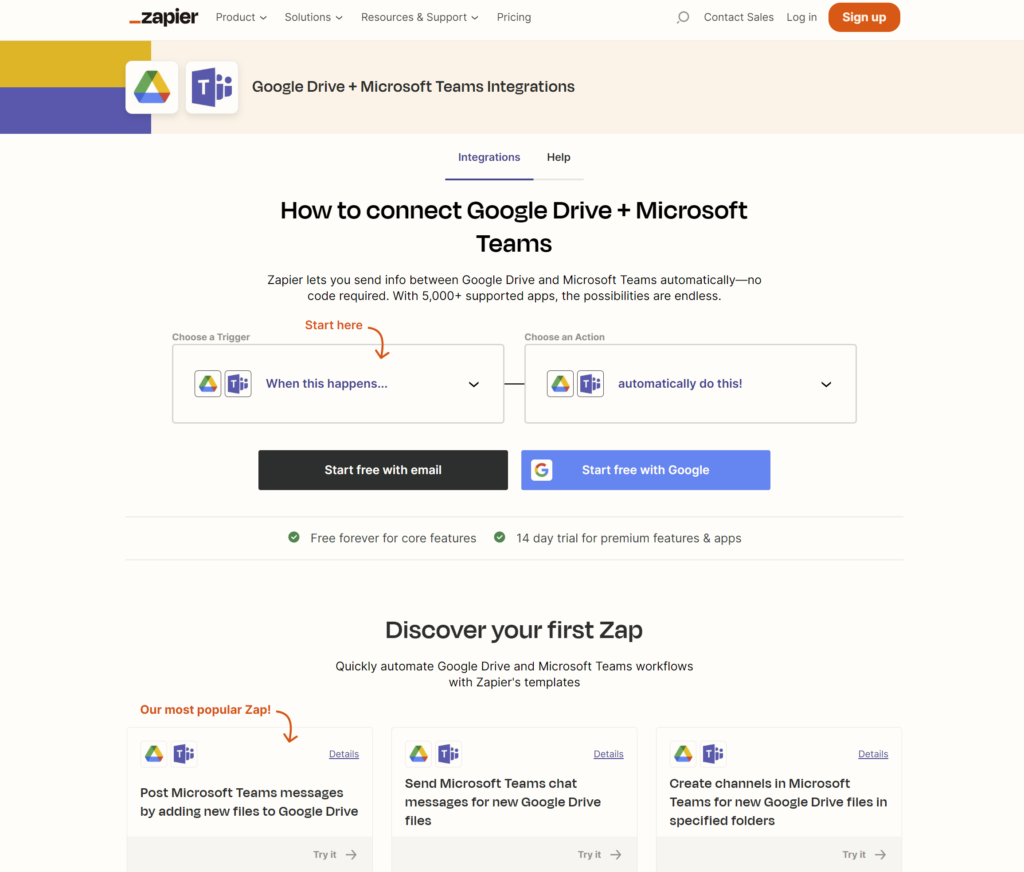
This is considered a data-driven approach, as the page itself is predominantly made up of data:
If you look at the page, the entire page itself could be built programmatically without any manual content being written, assuming that Zapier already had a list of all of the workflows, triggers, and actions mapped out internally.
All they’d need to do is have a data source to pull that data onto the page, into a template, and no manual content work here is required.
This is what makes this page set a data-driven approach.
The same goes for the actual on-page elements (Meta, title, H1, above-the-fold copy) as it’s all templated and used over and over again.
On a side note, if your solution supports dozens of integrations – creating integration pages at scale leveraging pSEO could be a great strategy to look deeper into.
Related Content: Integration Page Strategy for SaaS
Now let’s take a closer look at a content-driven pSEO example.
Signaturely is a company that offers an eSignature solution.
One of their core pillars for attracting customers is offering templates that customers are likely searching for in Google, and allowing customers then to eSign those using their software.
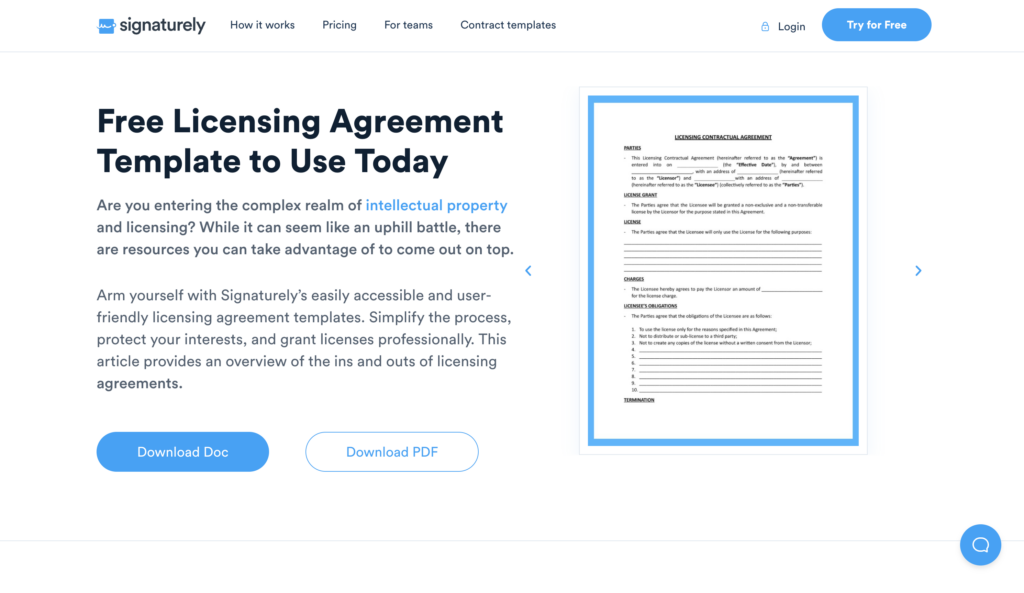
If you’re looking for a template for a contract, you’re likely going to be looking to eSign it as well – makes sense.
Signaturely has built hundreds of pages that focus on the target query:
Above the fold on every page, they provide a screenshot of the template and a clear CTA.
Below the fold, they’re leveraging unique content that follows the same template and outline for every single page:
This is considered a content-driven method to tackle this query type since the vast majority (or in this case, basically the entire page) is driven by unique content in order to rank.
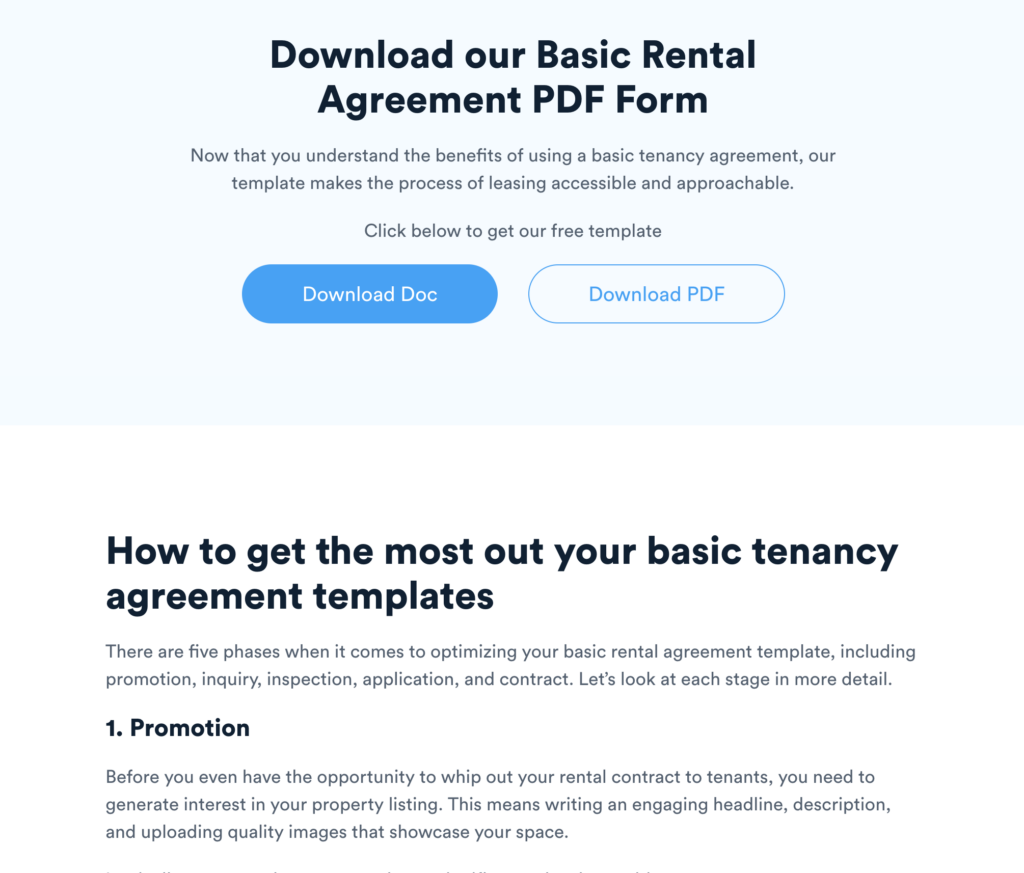
The usage of strictly data wouldn’t make sense in this case, because that doesn’t meet the intent behind this query.
Is this an SEO play? Yes.
The user (likely) is looking for a template and wants to download, use, and potentially eSign the contract.
The content below the fold is to help to get the page to rank.
Again – the method you will use, whether data or content-focused, is going to be determined by your target keyword(s) and will then drive out which direction you should go.
Forecasting impact from pSEO efforts, in effect, is similar to how we handle forecasting for other SEO efforts.
As always, keyword volume metrics regardless of their source should be taken with a grain of salt.
In order to start to build some ballpark forecasts, volume can at least be a good starting point to have an idea of the potential reach.
Related Content: SaaS SEO ROI Calculator
Within the calculation itself, we generally have two main levers we can be pulling that impact ROI:
In the end, the more right-fit visitors we can get to the website, and the more we can convert, the better our ROI will be (naturally).
Now, we just need to get a rough idea of volume and set some ballpark expectations of the % capture we’re going to grab, and what our total net new lift looks like.
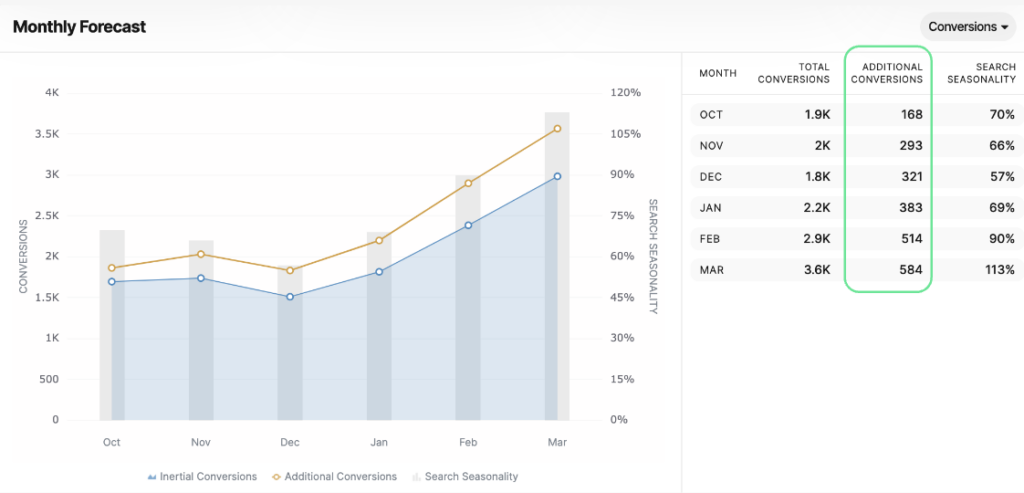
For example:
No ROI calculation or forecast is going to be perfect, since no one can perfectly predict the true search volume behind our target pSEO set, not the true % lift we will capture due to the nature of SEO.
But – this can act as a good starting indicator to ballpark efforts and start building some expectations around a pSEO initiative.
Another area where teams oftentimes get hung up when wanting to implement a pSEO strategy is around the quantity vs. quality conundrum:
How do we implement a programmatic strategy if traditionally we’ve been focused on creating in-depth, heavily researched content?
There seems to be a stigma with Programmatic SEO that pSEO = lower quality, higher quantity.
Although the higher quantity part is true (again, the keyword here is scale) it doesn’t mean we’re looking to lower the bar when it comes to quality of the content and pages themselves.
In fact, it’s the opposite.
We’re creating pSEO pages at scale, meaning we need to have an even tighter process and checks on those pages and their content as not to allow them to spiral out of control.
I’ve worked with a handful of clients that have legacy pSEO efforts with tens of thousands of pages with low-quality content, and let me tell you, that hurts your SEO and will catch up with you.
When looking at pSEO efforts in comparison to traditional SEO efforts:
Programmatic SEO should be done in conjunction with traditional SEO-focused content efforts.
Just because we’re implementing a pSEO-focused strategy, doesn’t mean we’re stopping all other SEO-focused content efforts.
Programmatic SEO is complimentary to our current content efforts and should be looked at as opening up a net new traffic source that would be difficult, if not impossible to do, by traditional content means.
Of course, it depends on your team makeup, but in many cases for teams taking the data-driven approach outlined involved – there will be essentially minimum to no involvement required from a content team.
In the case of the content-focused approach, most certainly there will be content resources involved in many cases, but we need to find a happy balance here between managing ongoing traditional content efforts, with pSEO efforts as well.
Regardless, traditional SEO efforts never stop.
We want to continue to:
In summary, pSEO should mean just as high if not higher quality output, and done in conjunction with traditional SEO content efforts.
Building your data set and/or the content you need to succeed will depend again on the SERPs that are your target query or queries you’re going after.
Many times, SaaS organizations have data internally that can satisfy queries they want to target, it’s simply either:
Here’s a good example of this.
Imagine a SaaS solution that provides real estate investors with analytics around investment yield, and other statistics and datasets for certain demographic regions – an example of this would be PropertyData.
PropertyData knows that their ICP is highly interested in rental yields in different cities and zip codes.
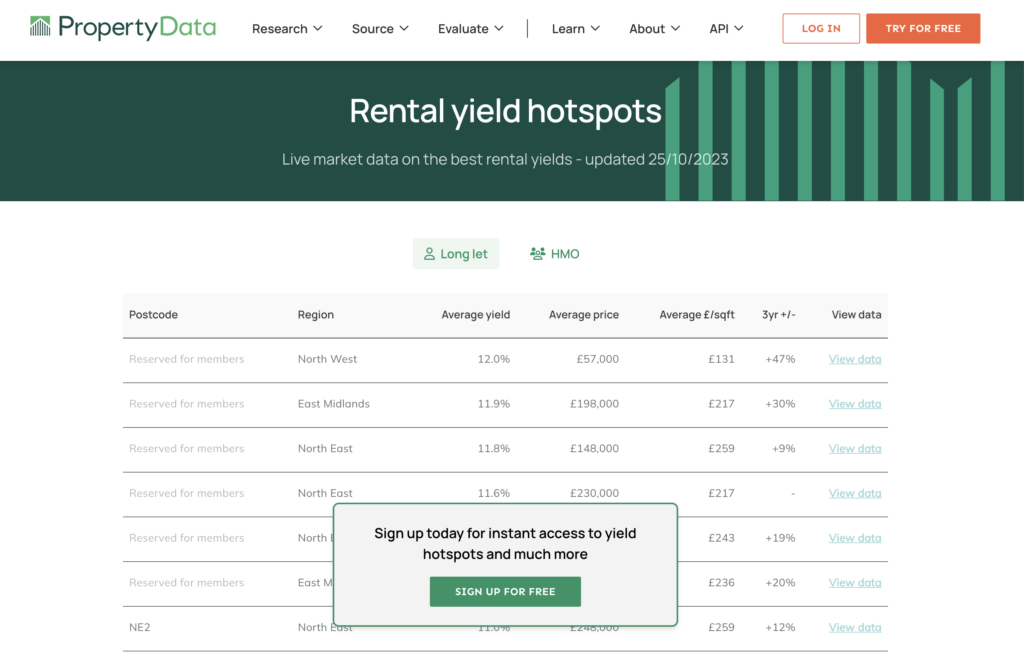
So what do they do?
They unlock part of their dataset to create pSEO pages to answer the SERP intent for all relevant cities and zip codes in the UK.
The target query looks like this:
Simply by unlocking and using a small subset of their existing data, they’re able to create thousands of pages for their ICP – get them to the landing page, and then drive them to a free sign-up to access the data.
The question around datasets all starts with:
If you’re going after the right target queries to start and low-hanging fruit, 9 times out of 10 you’ll have this data already, there will just be some internal leg work to get the right output and what you need.
As we move deeper into 2023, a common question that gets asked when it comes to programmatic SEO is:
Can we leverage AI to help us create content and/or compile data sets for programmatic SEO pages?
My answer? Yes.
But, there’s more to it than that.
Earlier this year, Google released their AI content guidelines, essentially giving their approval on the usage of AI content when it comes to indexing and rankings:
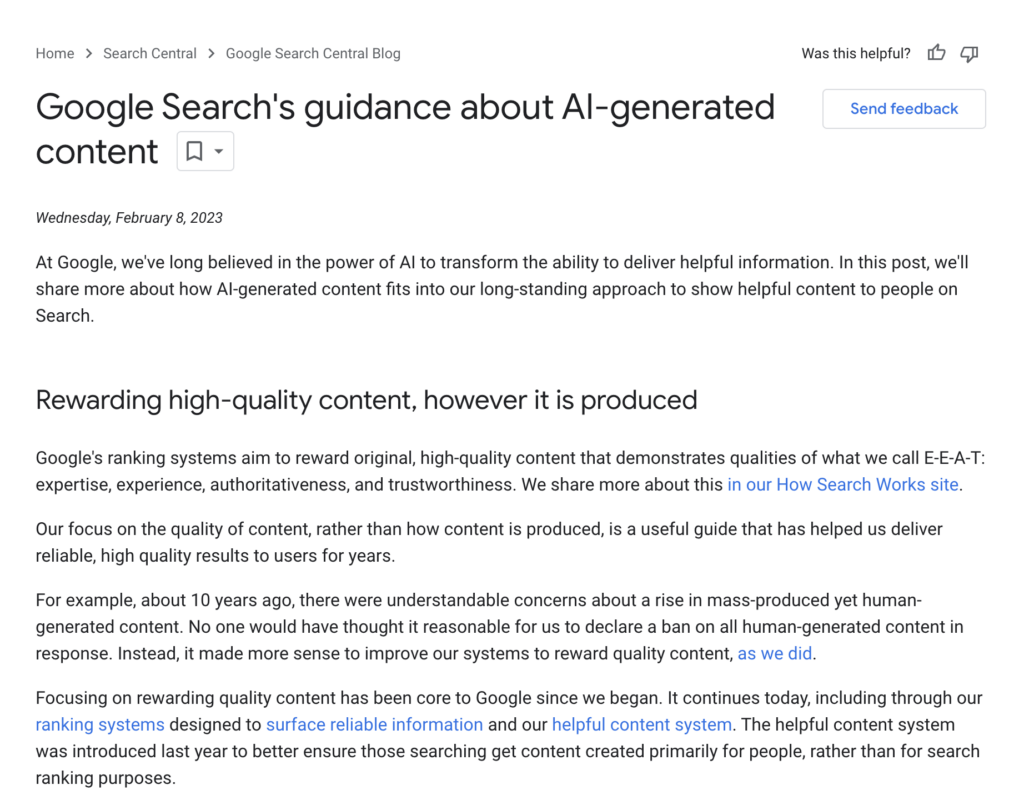
A high-level recap on Google’s stance when it comes to AI content:
Seeing AI-generated content for pSEO efforts being leveraged by high-authority, heavy-hitting domains – my initial thought was that this likely would work well only for domains that are very authoritative.
This is also confirmed on LinkedIn from a lot of the chatter and analysis of larger sites leveraging AI-based content to drive traffic and conversions:
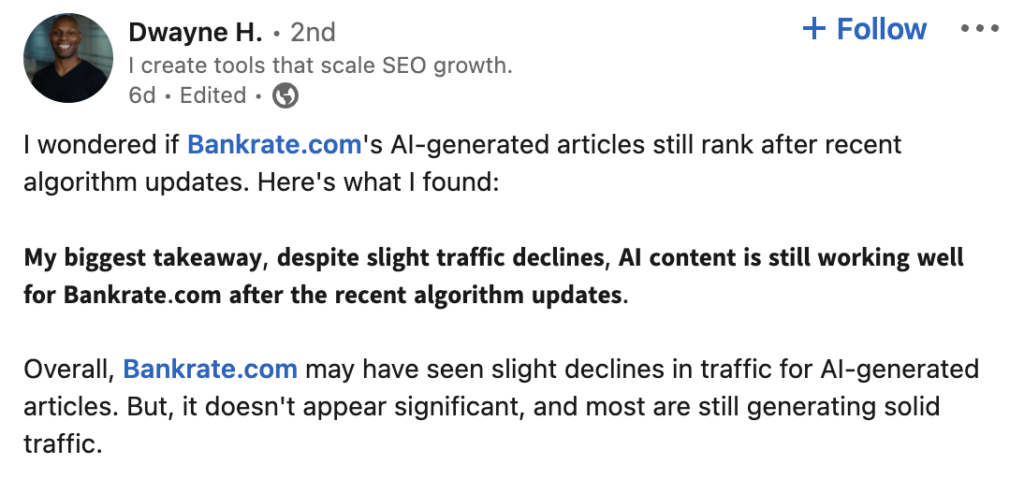
After additional experimenting myself into 2023, as well as working with startups and young companies looking to take an aggressive, yet controlled approach to building pages and content at scale, I’ve found that when done right, quality AI output and content can still rank and drive conversions even for non-authoritative domains.
An example of this – I’ve seen very low DR domains with minimal links pointing to them driving 80%+ of their customer acquisition efforts directly from pSEO efforts.
In one particular scenario, I’m even talking about a product with a ACV in the 5-figure range, and in some cases, 6-figures.
If you’re planning to leverage AI in your pSEO process, I’m all for it – if you do it right.
Some high-level thoughts and tips on leveraging AI:
In the end, looking at leveraging AI in your content will highly depend on the exact queries you’re looking to target, your specific industry and space and should be investigated more closely on a case-by-case basis.
Implementing a programmatic SEO strategy can be a rewarding experience when it comes to building additional right-fit traffic, and conversions.
The challenges of pitching and defending the idea internally can seem like a daunting task, but if you have a solid, scalable set of pages you can create using either a data-driven or content-driven approach, answering the other common questions and concerns should be much easier leveraging some of the core insights and feedback provided in this article.
If you’re stuck on pSEO and need some help – we’ve likely seen the problem before. Book some time on my calendar to connect 1-on-1, and let’s see how we can get you unblocked, and build quality pages at scale.
Founder of Rock The Rankings, an SEO partner that helps B2B SaaS brands crush their organic growth goals. An avid fan of tennis, and growing micro-SaaS businesses on the weekend. 2x SaaS Co-Founder – Currently working to build and scale Simple Testimonial.
Book a 1-on-1 intro call with our founder that includes a FREE custom marketing plan. Start growing faster, today.